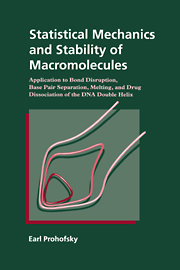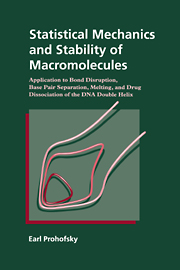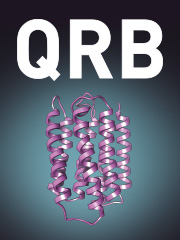Thermodynamics and Statistical Mechanics of Macromolecular Systems
The structural mechanics of proteins that fold into functional shapes, polymers that aggregate and form clusters, and organic macromolecules that bind to inorganic matter can only be understood through statistical physics and thermodynamics. This book reviews the statistical mechanics concepts and tools necessary for the study of structure formation processes in macromolecular systems that are essentially influenced by finite-size and surface effects. Readers are introduced to molecular modeling approaches, advanced Monte Carlo simulation techniques, and systematic statistical analyses of numerical data. Applications to folding, aggregation, and substrate adsorption processes of polymers and proteins are discussed in great detail. Particular emphasis is placed on the reduction of complexity by coarse-grained modeling, which allows for the efficient, systematic investigation of structural phases and transitions. Providing insight into modern research at this interface between physics, chemistry, biology, and nanotechnology, this book is an excellent reference for graduate students and researchers.
- Introduces the basic concepts of statistical physics with emphasis on small systems
- Summarises the necessary tools for the simulation of macromolecular systems, providing readers with the skills to get started with Monte Carlo simulations and molecular modeling
- Shows how to analyze data obtained in computer simulations and how to assess their quality
Reviews & endorsements
'The clarity of exposition supports the author's goal with respect to his view. In fact, as stated in the preface and outline of his work, he wished to overcome the frustration for the present contradicting and inconclusive literature in this field. The richness of specific examples also supports the book scope. The approach to modelling is also clearly described. … this book could be suitable also for non-experts in the field, due to its precise exposition of the subjects. I would recommend this book to people from different scientific backgrounds: starting from physics to biology, biochemistry and many others. The work by Bachmann should also be considered as … an acquisition, whose value is long-lasting. Finally, the exhaustive treatment contained in [this book] might also constitute a good support for defining future research paths and projects, which have now a wide spectrum of applications.' Marco Casazza, Contemporary Physics
Product details
April 2014Hardback
9781107014473
354 pages
252 × 193 × 20 mm
0.96kg
149 b/w illus.
Available
Table of Contents
- Preface and outline
- 1. Introduction
- 2. Statistical mechanics: a modern review
- 3. The complexity of minimalistic lattice models for protein folding
- 4. Monte Carlo and chain growth methods for molecular simulations
- 5. First insights to freezing and collapse of flexible polymers
- 6. Crystallization of elastic polymers
- 7. Structural phases of semiflexible polymers
- 8. Generic tertiary folding properties of proteins in mesoscopic scales
- 9. Protein folding channels and kinetics of two-state folding
- 10. Inducing generic secondary structures by constraints
- 11. Statistical analyses of aggregation processes
- 12. Hierarchical nature of phase transitions
- 13. Adsorption of polymers at solid substrates
- 14. Hybrid protein-substrate interfaces
- 15. Concluding remarks and outlook
- Notes
- References
- Index.







